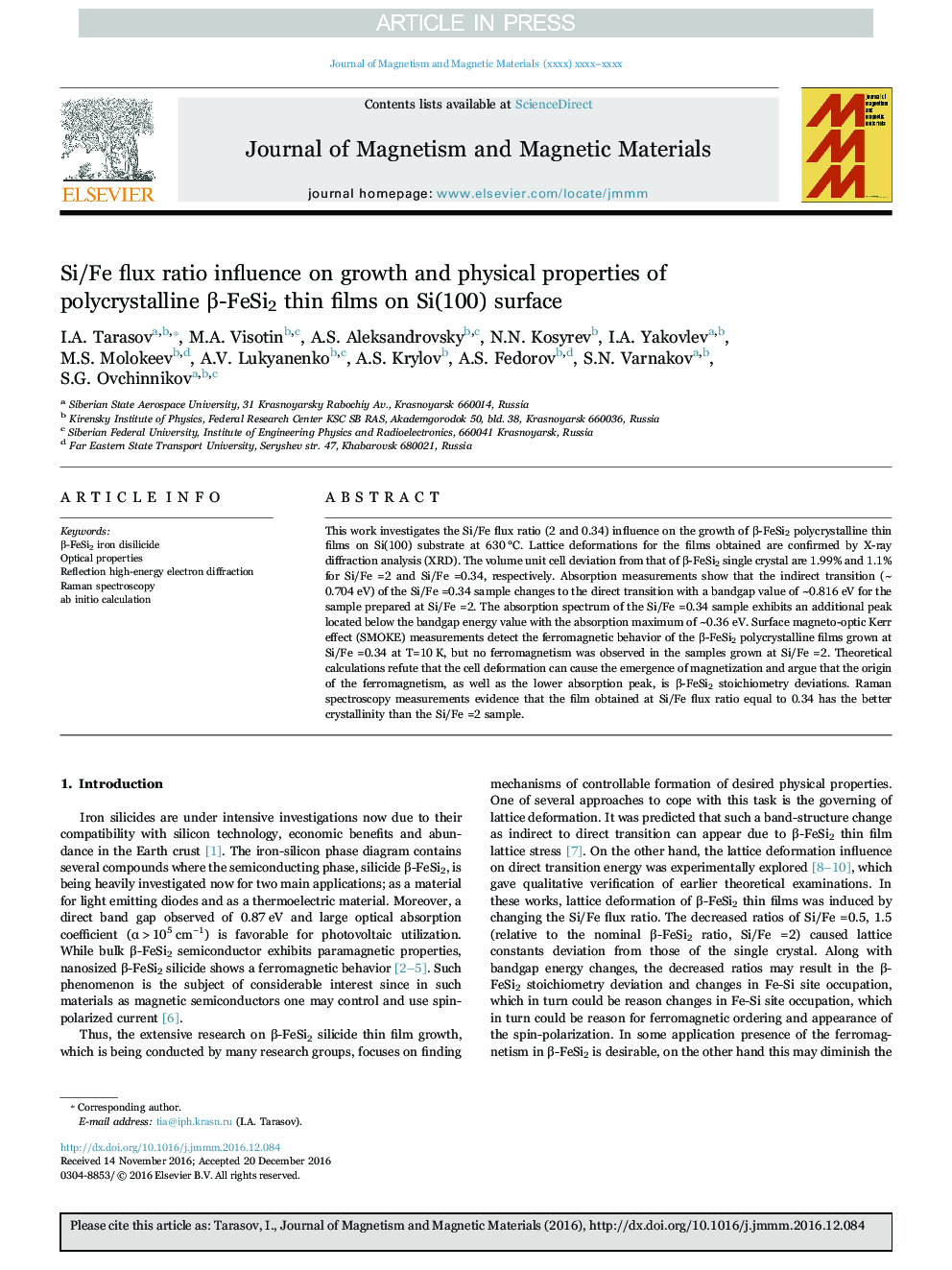| Article ID | Journal | Published Year | Pages | File Type |
|---|---|---|---|---|
| 5490780 | Journal of Magnetism and Magnetic Materials | 2017 | 9 Pages |
Abstract
This work investigates the Si/Fe flux ratio (2 and 0.34) influence on the growth of β-FeSi2 polycrystalline thin films on Si(100) substrate at 630 °C. Lattice deformations for the films obtained are confirmed by X-ray diffraction analysis (XRD). The volume unit cell deviation from that of β-FeSi2 single crystal are 1.99% and 1.1% for Si/Fe =2 and Si/Fe =0.34, respectively. Absorption measurements show that the indirect transition (~ 0.704 eV) of the Si/Fe =0.34 sample changes to the direct transition with a bandgap value of ~0.816 eV for the sample prepared at Si/Fe =2. The absorption spectrum of the Si/Fe =0.34 sample exhibits an additional peak located below the bandgap energy value with the absorption maximum of ~0.36 eV. Surface magneto-optic Kerr effect (SMOKE) measurements detect the ferromagnetic behavior of the β-FeSi2 polycrystalline films grown at Si/Fe =0.34 at T=10 K, but no ferromagnetism was observed in the samples grown at Si/Fe =2. Theoretical calculations refute that the cell deformation can cause the emergence of magnetization and argue that the origin of the ferromagnetism, as well as the lower absorption peak, is β-FeSi2 stoichiometry deviations. Raman spectroscopy measurements evidence that the film obtained at Si/Fe flux ratio equal to 0.34 has the better crystallinity than the Si/Fe =2 sample.
Keywords
Related Topics
Physical Sciences and Engineering
Physics and Astronomy
Condensed Matter Physics
Authors
I.A. Tarasov, M.A. Visotin, A.S. Aleksandrovsky, N.N. Kosyrev, I.A. Yakovlev, M.S. Molokeev, A.V. Lukyanenko, A.S. Krylov, A.S. Fedorov, S.N. Varnakov, S.G. Ovchinnikov,
